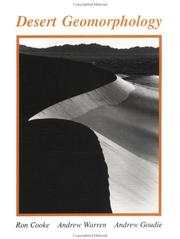How Long to Read Recession of Equatorial Glaciers
By S. Hastenrath
How Long Does it Take to Read Recession of Equatorial Glaciers?
It takes the average reader 2 hours and 23 minutes to read Recession of Equatorial Glaciers by S. Hastenrath
Assuming a reading speed of 250 words per minute. Learn more
Description
At a time when climate change is on the minds of scientists, policy makers, and the general public, there is a need for careful, objective documentation of the nature and magnitude of the changes that are already occurring. Glaciers on the high mountains of the low latitudes are sensitive indicators of climatic and environmental change. Near the Equator, ice is still found in East Africa, the Ecuadorian Andes, and New Guinea. Explorations over a century have included measurements of precipitation, net balance and ice flow velocity, mappings of areal extent and surface topography, and terrestrial and airborne photography and satellite imagery.Photographs by the author and by others prior to 1980 have been reproduced in two books, but in limited quality and availability. More photography has been conducted since then, in part incorporated into a report on Mount Kenya by the author. The Mountain Club of Kenya, Nikunj Shah and Kazahara Mizuno sent the author additional photographs from Mount Kenya; Konrad Steffen, Georg Kaser, Doug Hardy and Nils Wiklund provided recent pictures from Kilimanjaro, and Bernard Francou provided photos from El Altar, Antisana and Cotopaxi in Ecuador. Bolivar Caceres provided data on recent ice extent in the Ecuadorian Andes. Ian Allison and James Peterson contributed photographs from New Guinea.The almost 200 photographs, maps, and charts from all of the above sources have been compiled into a single comprehensive volume covering the period from the late 1800s to the present. It therefore serves as a one-of-a-kind archival record of the physical extent and appearance of the major glaciers still found in the equatorial zone, some of which could disappear over the next decades.Recession of Equatorial Glaciers: A Photo Documentation belongs in any academic or research library serving the glaciology, geography, and climate science communities.
How long is Recession of Equatorial Glaciers?
Recession of Equatorial Glaciers by S. Hastenrath is 142 pages long, and a total of 35,784 words.
This makes it 48% the length of the average book. It also has 44% more words than the average book.
How Long Does it Take to Read Recession of Equatorial Glaciers Aloud?
The average oral reading speed is 183 words per minute. This means it takes 3 hours and 15 minutes to read Recession of Equatorial Glaciers aloud.
What Reading Level is Recession of Equatorial Glaciers?
Recession of Equatorial Glaciers is suitable for students ages 10 and up.
Note that there may be other factors that effect this rating besides length that are not factored in on this page. This may include things like complex language or sensitive topics not suitable for students of certain ages.
When deciding what to show young students always use your best judgement and consult a professional.
Where Can I Buy Recession of Equatorial Glaciers?
Recession of Equatorial Glaciers by S. Hastenrath is sold by several retailers and bookshops. However, Read Time works with Amazon to provide an easier way to purchase books.
To buy Recession of Equatorial Glaciers by S. Hastenrath on Amazon click the button below.
Buy Recession of Equatorial Glaciers on Amazon